The Leibniz-IZW regular publishes press releases on key findings and insights from its research and on events, awards or personalia. The press releases are distributed directly to journalists on our press release distribution mailing list. Press releases are also disseminated through the distribution services Informationsdienst Wissenschaft, AlphaGalileo and EurekAlert. Are you interested in receiving our press releases directly via e-mail? In this case please send us an email to presse@izw-berlin.de.
Current press releases
-066dbghjwnv6jd7.jpg)
On the trail of novel infectious agents in wildlife: First scientific description of a previously unknown Streptococcus species of Chacoan peccaries
The species richness of zoo and wild animals is reflected in the diversity of infectious agents they harbour. However, our knowledge is sparse and pathogen detection remains challenging. For streptococci, a bacterial family of importance to human and animal health, wildlife research has taken a step forward: A research team led by Kristin Mühldorfer from the Leibniz Institute for Zoo and Wildlife Research (Leibniz-IZW) and Tobias Eisenberg from the Hessian State Laboratory investigated the causes of severe respiratory disease in peccaries and taxonomically characterised a novel Streptococcusspecies (Streptococcus catagoni sp. nov.) based on its phenotypic properties and genetic features. The results, published in the „International Journal of Systematic and Evolutionary Microbiology“, contribute to a better understanding and reliable identification of this novel bacterial species.
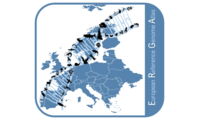
Scientists call for support for European Reference Genome Atlas to decipher the genomes of all European species
Scientists of the Leibniz Institute for Zoo and Wildlife Research (Leibniz-IZW) together with colleagues representing 39 institutions from 17 EU countries have called upon the European Commission to support genomics research as part of the EU Biodiversity Strategy for 2030 in the upcoming Horizon Europe programme. The group proposes to the EU to provide competitive funding for sequencing the genomes of all animals, plants, and microorganisms in Europe (at least 200,000 species) in a Pan-European collaborative effort tentatively named European Reference Genome Atlas (ERGA). This urgent call is intended to foster better understanding, management and restoration of biodiversity and ecosystem services. Scientists, politicians and interested citizens are invited to add their names as signatories to the list in support of ERGA at https://vertebrategenomesproject.org/erga.

Leibniz-IZW lynx research project receives award from the UN Decade of Biodiversity
The "German Conservation Research Project – Iberian Lynx" of the Leibniz Institute for Zoo and Wildlife Research (Leibniz-IZW) was awarded yesterday the prize of being an official project of the UN Decade of Biodiversity. Prof Christine Wrenzycki (University of Gießen) presented the award. Wrenzycki is deputy chairperson of the scientific advisory board of the Leibniz-IZW. The award is given to exemplary projects that are particularly committed to the conservation of biological diversity.
Read more … Leibniz-IZW lynx research project receives award from the UN Decade of Biodiversity
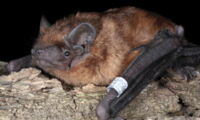
Generational shifts help migratory bats keep pace with global warming
Many animal species are currently changing their distribution range owing to global warming. The underlying mechanisms are still little known, especially in mammals. An international team of scientists led by the Leibniz Institute for Zoo and Wildlife Research (Leibniz-IZW) has now demonstrated that in the common noctule bat, one of the largest European bat species, the colonization of hibernacula progresses from lower to higher latitudes over successive generations of young animals – especially first-year males. Because of their relatively high reproduction rate and the long-distance dispersal of male juveniles, it is probably relatively easy for common noctules to adjust to global warming. For species with lower reproduction rates and a limited migratory potential of the young – the majority of European bat species – the future might not look as favourable when facing continuing global warming. The paper was published in the scientific journal "Biology Letters".
Read more … Generational shifts help migratory bats keep pace with global warming
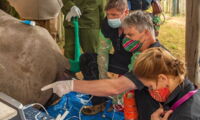
Another lap won in the race against time: Northern white rhino rescue programme resumes work with successful egg harvest
After a hiatus of a few months owing to the global COVID-19 pandemic, the international team of scientists and conservationists continued its ambitious programme to save the northern white rhino from extinction: On August 18, 2020 they harvested ten eggs from the last remaining two individuals, Najin and Fatu, in the third-ever ovum pickup procedure in northern white rhinos, at Ol Pejeta Conservancy in Kenya. With great support from the Kenya Wildlife Service and the Kenyan Ministry of Tourism and Wildlife, the team from the German Leibniz Institute for Zoo & Wildlife Research (Leibniz-IZW) and Czech Safari Park Dvůr Králové overcame substantial challenges to perform this important procedure in such critical times. Preparations for the next steps in the programme – the generation and transfer of embryos – are underway, ensuring that everything is done to make the best possible progress to save the northern white rhino from the brink of extinction.
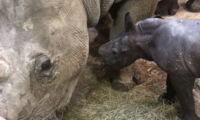
First in-depth insights into parturition in rhinos will foster better birth management and obstetrics in zoological gardens
When exactly is a rhino offspring born? How long does the birth actually take? Does parturition proceed normally? Answers to these and similar questions are difficult for experts in zoological gardens, since baseline knowledge of the reproduction cycle of all rhinoceros species, especially its final stage, the parturition, is scarce. Scientists from the Leibniz Institute for Zoo and Wildlife Research (Leibniz-IZW) together with zoo veterinarians closely monitored 19 pregnant white rhinos in six European zoos and recorded timelines for pre-birth development, milk production, hormone levels, gestation length and documented the onset of parturition, different stages of labour and foetal position at birth. These data significantly improves the knowledge base for birth management and obstetrics in rhinos and will help to reduce the number of stillbirths or perinatal problems in zoological gardens. The results are published in the scientific journal “Theriogenology”.
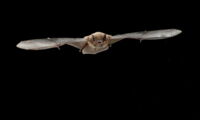
When calling loudly, echolocation is costly for small bats
Calling in the ultrasonic range enables small bats to orient themselves in the dark and track down tiny insects. Louder calls travel farther, improving a bat’s ability to detect their prey. It was long assumed that echolocation does not contribute much to energy expenditure in flight because individuals simply couple their calls with the beat of their wings. Scientists at the Leibniz Institute for Zoo and Wildlife Research (Leibniz-IZW) in Berlin have now shown in a paper in the scientific journal “Nature Ecology & Evolution” that high intensity echolocation calls are by no means free and substantially contribute to energy expenditure. Bats must therefore find a balance between energy expenditure and effective echolocation and use the latter economically.
Read more … When calling loudly, echolocation is costly for small bats
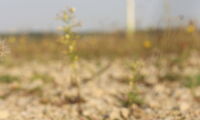
Trust me if you can: why stakeholders in the “wind energy vs biological conservation” conflict have low mutual trust and how to increase it
Wind energy is considered to be one of the most promising forms of renewable energy. Yet, each year, wind turbines are responsible for the death of hundreds of thousands of airborne animals such as bats which die from collisions with turbine blades. To find a constructive way out of this “green-green” dilemma, companies building and running wind turbines might have to work together with environmental experts and conservationists. Yet a lack of trust between them is likely to hinder effective and creative collaboration. In an article published in Energy Reports, scientists of the Leibniz Institute for Zoo and Wildlife Research (Leibniz-IZW) show that shared values alone are not sufficient to build mutual trust between these groups, as beliefs and emotions hold a stronger sway for the collaboration. The authors argue that an improved awareness of each others’ beliefs and emotions in relation to the construction and operation of wind turbines can benefit their work in this field and help find a way out of the dilemma.

